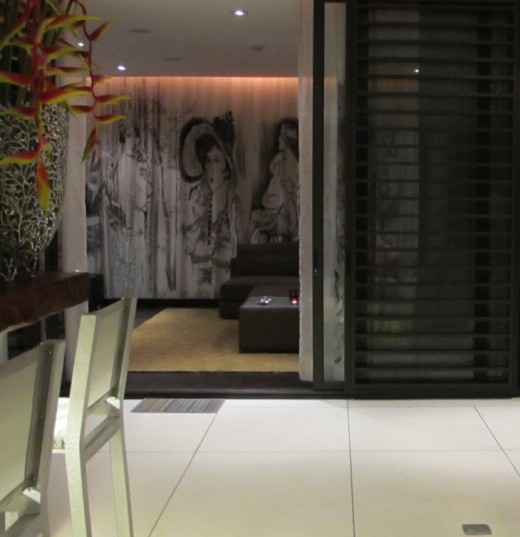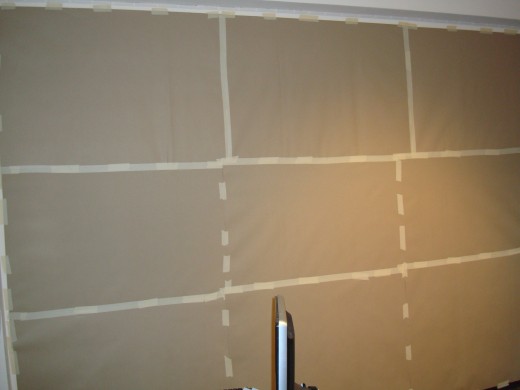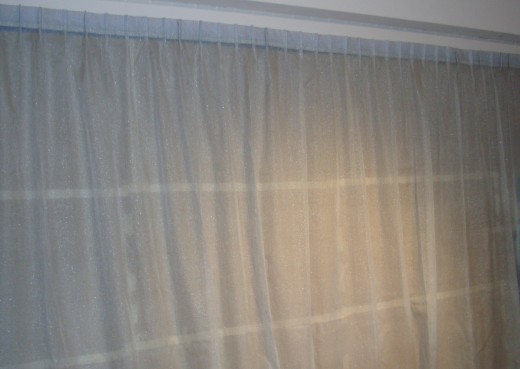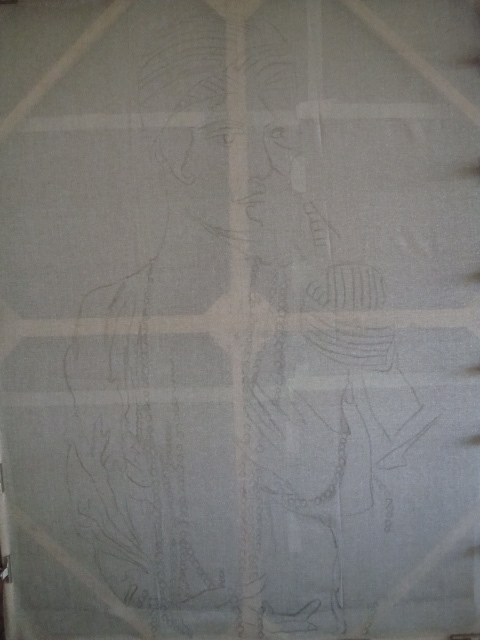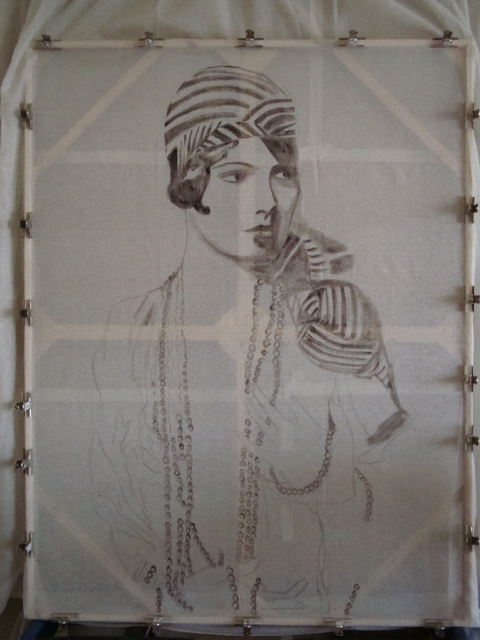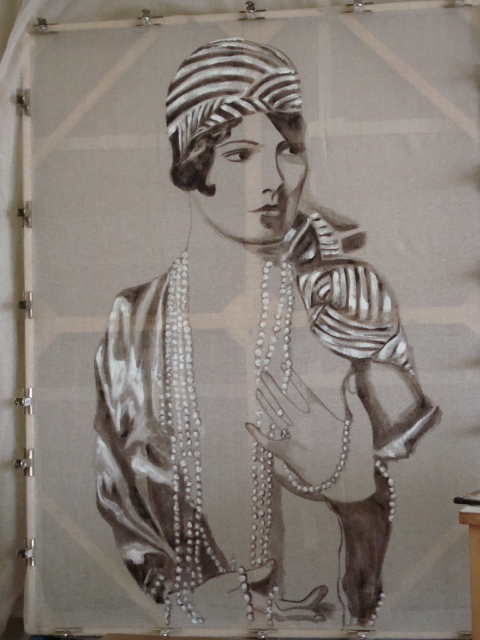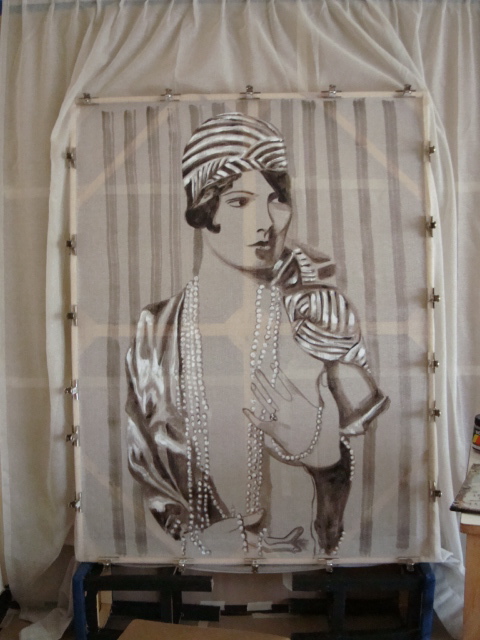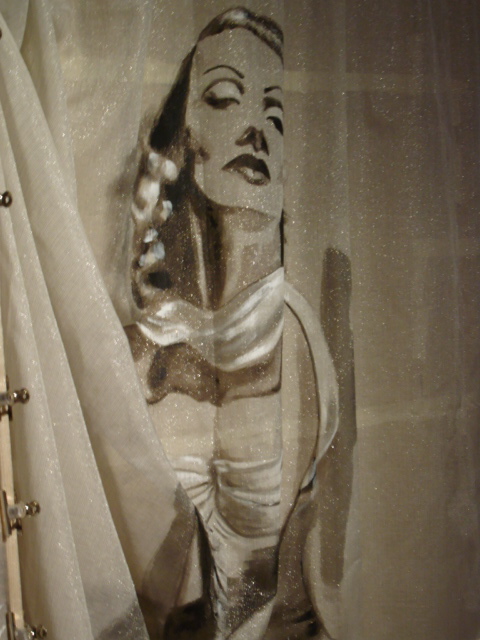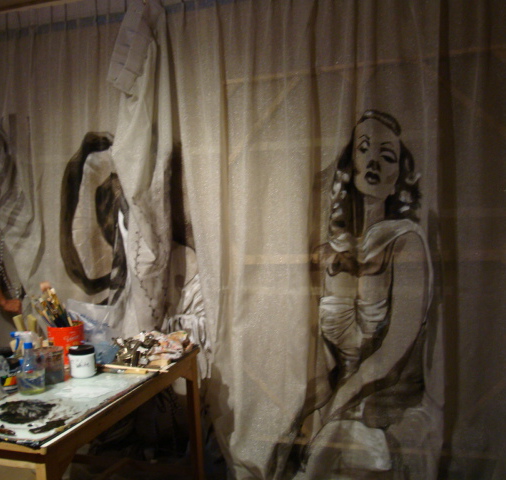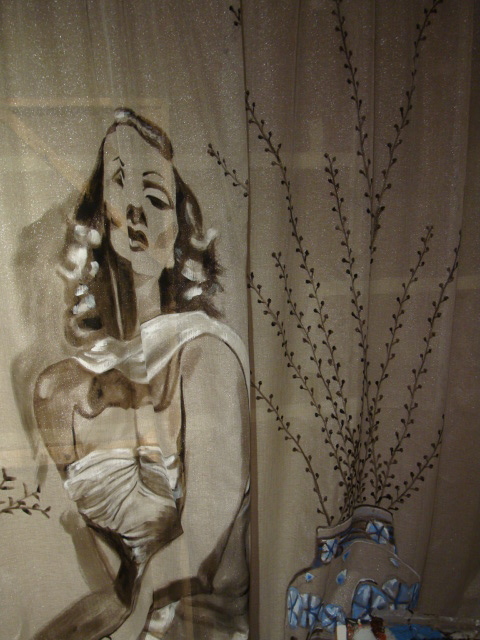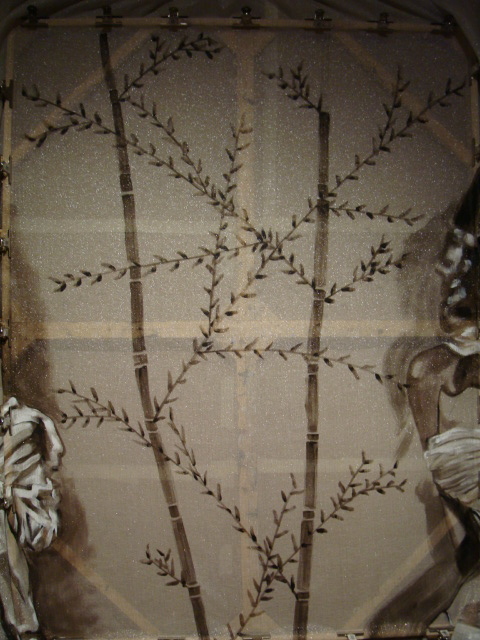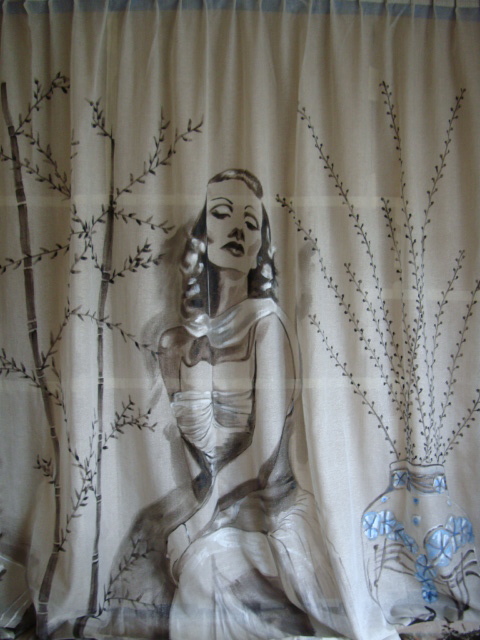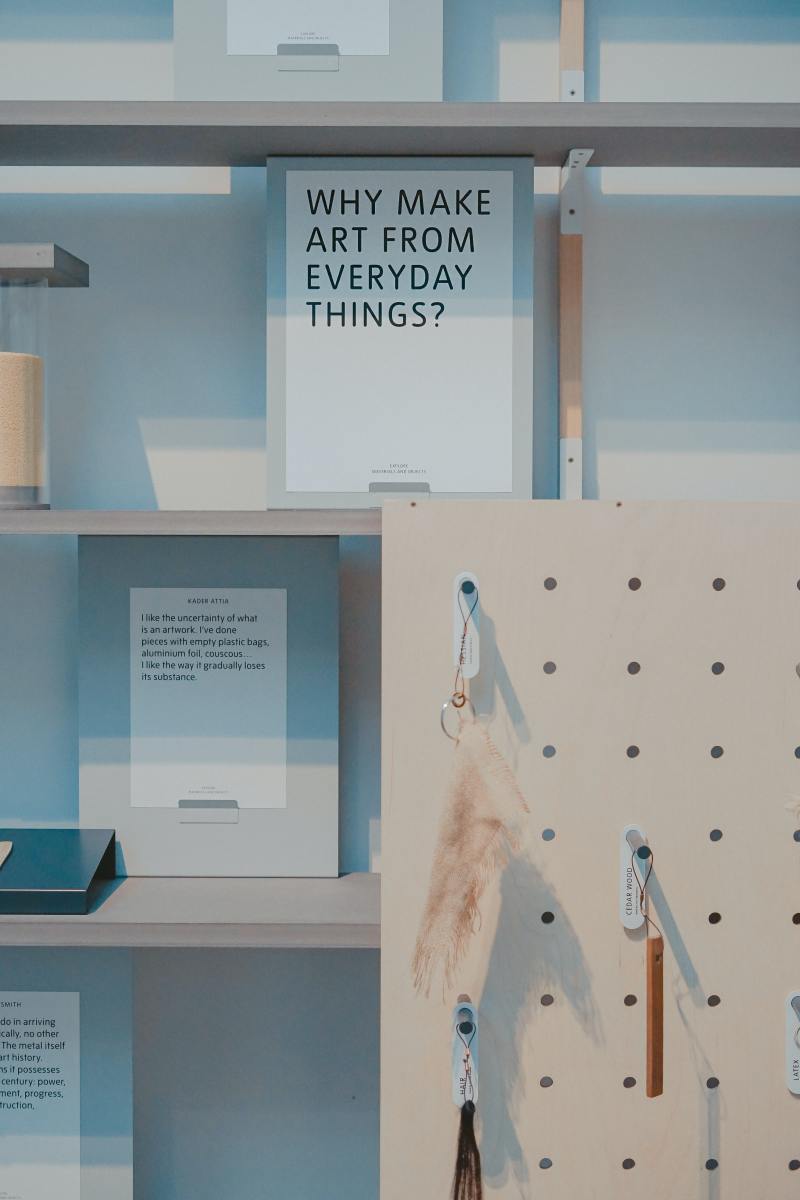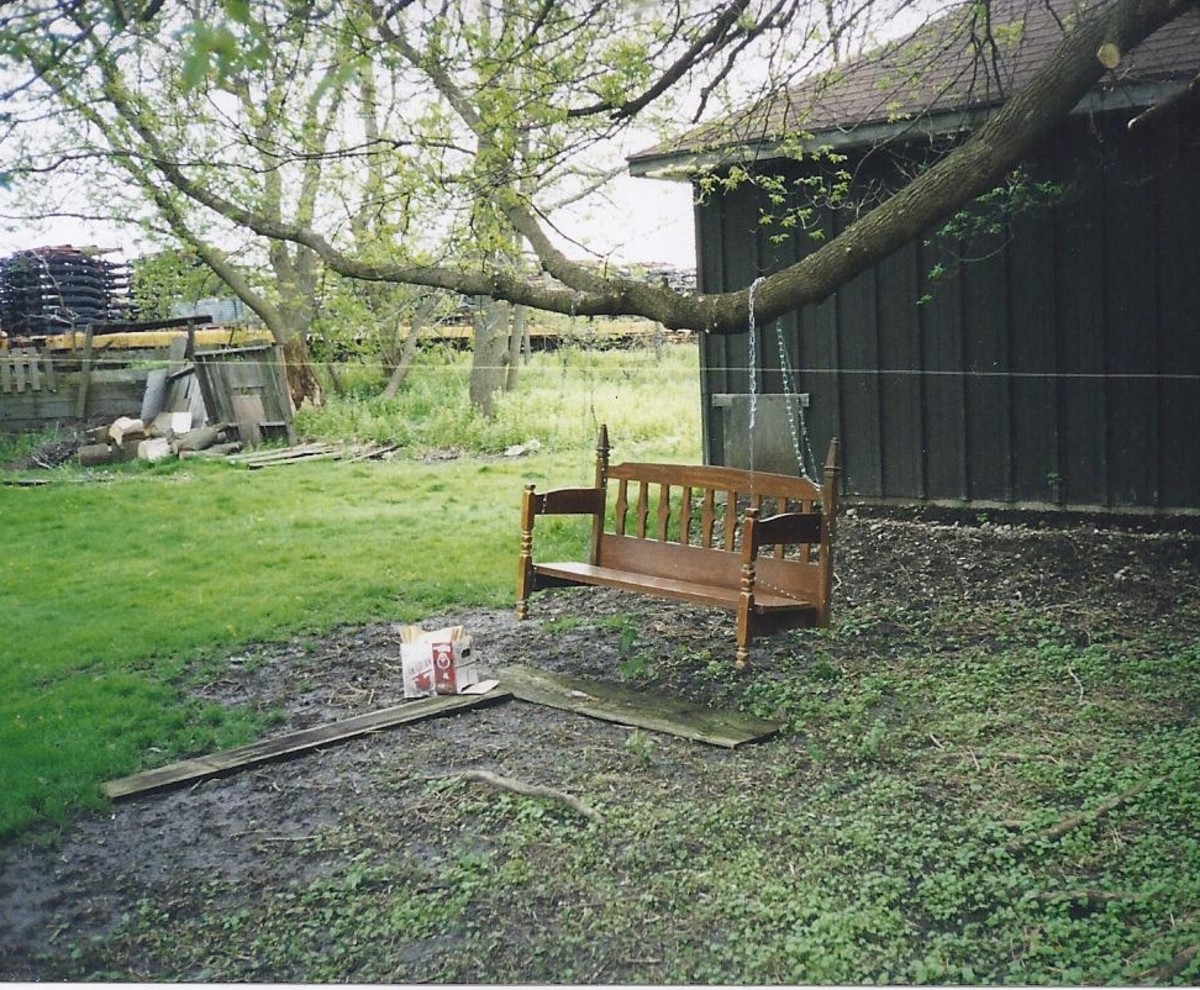How To Hand Paint Curtains with Silkscreen Ink
Hand Painted Silk Curtain
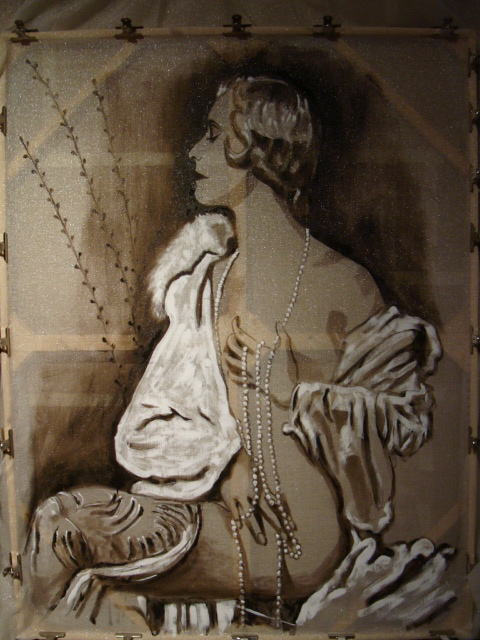
Recreating the Silverscreen Era
As the economy slows for some, condominiums and vacation homes continue to sell - at least in S.E. Asia. Most of the people purchasing homes or condominiums in beach resorts, such as Phuket, Thailand, have little time for home décor and look towards interior designers for help.
Each season brings new, fresh and competitive decorative ideas. These ideas which are invented, borrowed and morphed from existing ideas, are then put into play by the designers, agreed to by the owner of the property and then assigned to us - the artists, to interpret and figure out how to create an abstract verbal idea into reality. Some of these ideas are so ambitious that they become intricate puzzles to figure out.
The latest idea in décor is hand-painted silk curtains. After all, who wouldn't want to feel this plush? My collaborator and I were approached to see if we had time to figure out how to manifest the concept of Silver Screen Godesses onto Jim Thompson silver silk curtains. The curtains were for a private Theatre Room which overlooks the sea. Since we are always looking for a challenge, we accepted the offer and figured out the process, which I will now share with you.
How to Paint on Silk Curtains
First things first: Try to paint on the fabric before it is stitched into curtains. This will help speed up your process.
What you will need:
- Images to work from
- Silkscreen Ink - Water-Based Normal Ink
- Brushes
- Water Bucket
- Rags
- Palette Knife
- Palette (Glass is preferred with a white surface underneath)
- Fabric
- Stretcher Bars
- Clips
- Brown or Black Craft Paper
- Tape
- Willow or Vine Charcoal
Silk Curtain in Process
Click thumbnail to view full-size










Painting Process
- Cover the wall you will work in front of with brown or black paper. This will help give you a background to see the depth in your painting. Otherwise, details will be hard to see. The curtains are most visible at nighttime, so something dark behind the curtain is very helpful.
- Stretch your fabric over the stretcher bars using clips. Have the stretcher bars pre-made to the size curtain segment that you are painting. You can move the stretchers down after the painting dries - so width isn't a main concern - though height can make a huge difference! When you clip your fabric to the stretcher bars, start from the mid-points and work your way around the stretchers, tightening the corners last. Be patient so you don't run the fabric with the clip - it's a very delicate process depending on the fabric you use.
- Either draw or project your image onto the canvas using a charcoal to layout the outline. Draw lightly so you can see it, but that it won't be seen after you finish painting.
- Silkscreen ink is blobby and a little goes a long way. Scoop out a small blob with your palette knife onto the glass palette. Use a spray bottle to spray water on it as you mix with your palette knife. In order to get it to a working state that can be painted with a brush, it requires a lot of water, a lot of mixing and even more patience. Be careful to not splatter the ink on surrounding objects (including yourself). If it touches objects that are not fabric, you have a few minutes to wipe them down. However, if it touches your clothes, you've been painted for good.
- Go slow. Work from light to dark. Paint in the most watery-looking details first and let the area dry completely before you move on, or else the paint will continue to spread.
- To get more intricate details, use less water in your ink. You can scumble (scrub the fabric with a brush) to move paint around, but be cautious that your fabric may not be strong enough to handle too much of it without punctures or runs.
- Let your painting dry completely before carefully removing the clips.
- The fabric is now ready to be sewn into curtains or hung. Silkscreen ink is washable and won't fade or flake.
Installed Works of Art
